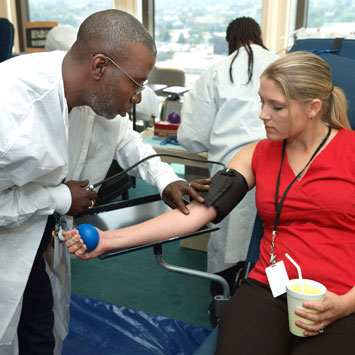FDA 510(k) Submissions
What is "FDA 510(k)?"

FDA 510(k) is a submission required for obtaining certification for marketing of Class I and most of Class II Medical Devices in the United States. As marketing medical devices in the U.S., it is necessary to comply with regulations by the FDA. The FDA will evaluate if the device is substantially equivalent to other legally marketed devices (AKA: predicate devices). Examples of evaluating criteria are: purpose of use, technical specifications, and how safe the device is. After that, FDA will approve the device to be marketed in the U.S.
510(k) Submission:
STEP 1
Relevancy Research & Predicate Research

Start by researching to evaluate if the product description meets the medical device definition found in FDA regulations. According to FDA, a medical device is, "an instrument, apparatus, implement, machine, contrivance, implant, in vitro reagent, or other similar or related article, including a component part, or accessory,” which is, “intended for use in the diagnosis of disease or other conditions, or in the cure, mitigation, treatment, or prevention of disease, in man or other animals, or intended to affect the structure or any function of the body of man or other animals, and which does not achieve its primary intended purposes through chemical action within or on the body of man or other animals and which is not dependent upon being metabolized for the achievement of any of its primary intended purposes.
510(k) Submission:
STEP 2 Device Classification・Product Code Classification
The device classification and the product code classification determine which Medical device classification the product will be categorized in. Below are the three Medical Device Classifications established by FDA.

Class1(Class Ⅰ):General Controls
If any defect has been found in a ClassⅠmedical device, it will not cause a serious harm to patients or users. ClassⅠmedical devices have the lowest-risk compared to other two classes, ClassⅡand Class Ⅲ, and the risk should be solved by general rules. Approximately 30% of the medical devices in the market are estimated to be ClassⅠdevices.
Example:Bandage, Adhesive tape
Class2(Class Ⅱ):Special Controls
Class Ⅱdevices carry a higher risk than ClassⅠdevices, and defects in the product could cause a harm to the patients. 60% to 70% of the medical devices in the market are estimated to be ClassⅡdevices.
Example:Electric wheelchair, Blood infusion pump, Anesthesia apparatus, Cardiac monitor, Electrocardiographic, Pregnancy test kit, Processing system for frozen blood, Oxygen gas analyzer, etc.
Class3(Class Ⅲ):Premarket Approval/ PMA
Class Ⅲ devices carry a highest risk among others. If there are any defects in a Class Ⅲ device, it may cause a serious harm to the patient or may lead to death. Many Class Ⅲ devices are used for rescue or life support, but they also have potential risks towards illnesses or injuries. Less than 10% of medical devices in the U.S. market are categorized in this class.
Example:Artificial cardiac valve, Cardiac valve for transplant, Heart lung apparatus, Implantable devices, Artificial organ, Pacemaker, Balloon catheter, Implanted cerebellar stimulator, etc.
510(k) Submission:
STEP3 510(k)Submission

Depending on requirements from FDA for the device to be marketed, submission of either “Premarket Notification,” “FDA 510(k),” or “Premarket Approval (PMA)” will be required.
510(k) submissions are a specialty here at Globizz. We have a lot of experience in making successful submissions. We will provide total support for you when you are ready to the market in the U.S., including documentation, submission, and direct discussion with FDA. Please contact us for further information about FDA 510(k).
